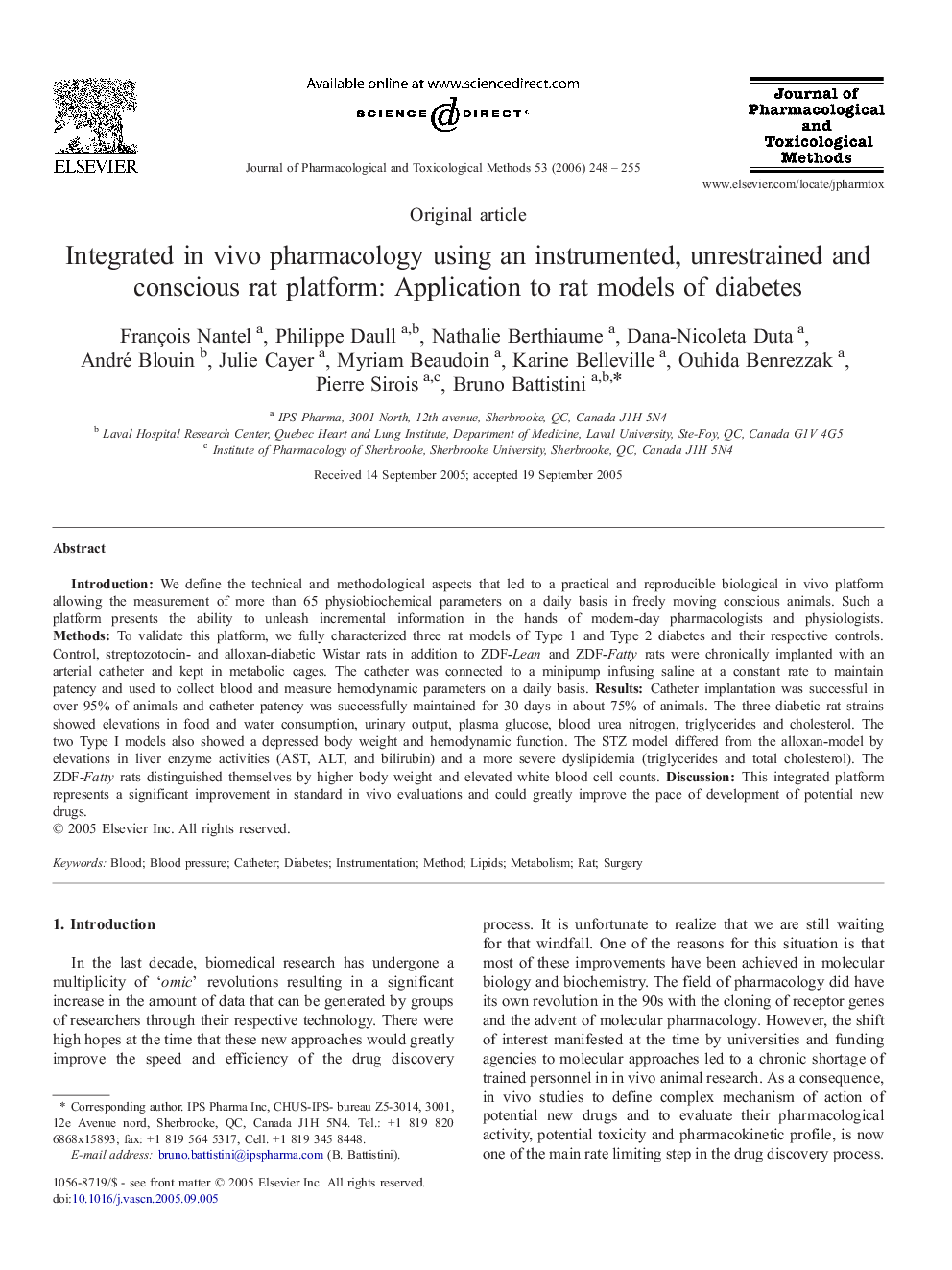| Article ID | Journal | Published Year | Pages | File Type |
|---|---|---|---|---|
| 2550312 | Journal of Pharmacological and Toxicological Methods | 2006 | 8 Pages |
IntroductionWe define the technical and methodological aspects that led to a practical and reproducible biological in vivo platform allowing the measurement of more than 65 physiobiochemical parameters on a daily basis in freely moving conscious animals. Such a platform presents the ability to unleash incremental information in the hands of modern-day pharmacologists and physiologists.MethodsTo validate this platform, we fully characterized three rat models of Type 1 and Type 2 diabetes and their respective controls. Control, streptozotocin- and alloxan-diabetic Wistar rats in addition to ZDF-Lean and ZDF-Fatty rats were chronically implanted with an arterial catheter and kept in metabolic cages. The catheter was connected to a minipump infusing saline at a constant rate to maintain patency and used to collect blood and measure hemodynamic parameters on a daily basis.ResultsCatheter implantation was successful in over 95% of animals and catheter patency was successfully maintained for 30 days in about 75% of animals. The three diabetic rat strains showed elevations in food and water consumption, urinary output, plasma glucose, blood urea nitrogen, triglycerides and cholesterol. The two Type I models also showed a depressed body weight and hemodynamic function. The STZ model differed from the alloxan-model by elevations in liver enzyme activities (AST, ALT, and bilirubin) and a more severe dyslipidemia (triglycerides and total cholesterol). The ZDF-Fatty rats distinguished themselves by higher body weight and elevated white blood cell counts.DiscussionThis integrated platform represents a significant improvement in standard in vivo evaluations and could greatly improve the pace of development of potential new drugs.
